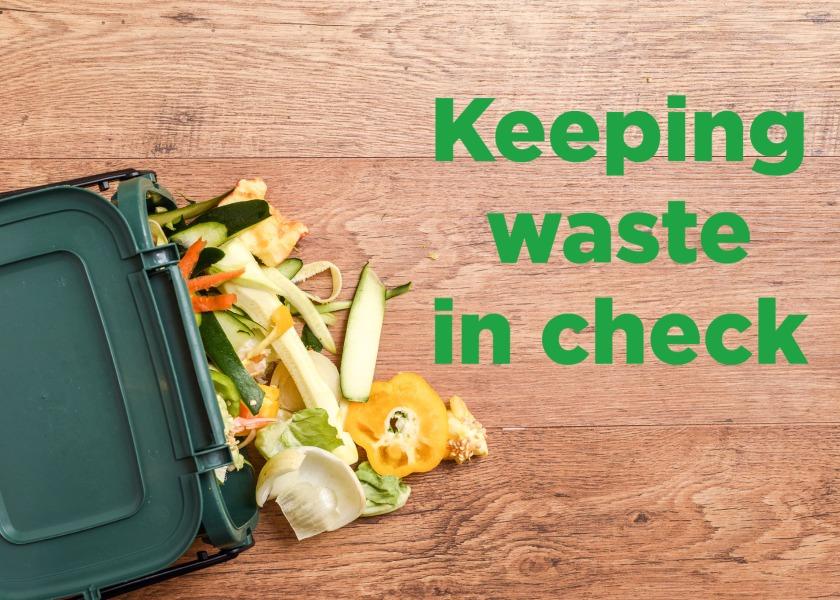The produce industry: Keeping waste in check

In a (very) superficial review on the legendary playwright William Shakespeare, I read this: “In a tragedy, when good is destroyed with evil, the loss is known as a ‘tragic waste.’”
While far removed from this literary example, the produce industry indeed has a lot of waste.
News articles in trade journals (including The Packer) point to numerous studies that direct the spotlight on waste: Quantifying the issue in millions of pounds over periods of time. Where it originates and raising the constant, unanswered question, “Why aren’t we doing more about it?”
Well, what about it? At least as far as the retail perspective?
Let’s break it down and begin with fresh produce sources. In every grower and shipper trip I’ve ever taken, I’ve witnessed only the highest care taken to minimize waste. Some well-meaning journalists go so far as to suggest that farmers allow less-than-cosmetically perfect produce to wilt away in fields. Hardly. Every farm or ranch I’ve seen takes full advantage of the range of saleable produce. They must, to survive.
There’s a market for everything, the industry saying goes. And the grower/shipper has dedicated packing lines for both pristine and imperfect produce. The less-than-desirable going into No. 2 or similarly named grades, and these equally nutritional counterparts, are often ideal for discount chains, foodservice or commercial uses. And what’s left over after this level is useful for livestock feed. A wasteful source? I think not.
Where I suspect much of our waste occurs is, sadly, at home in our own vegetable crispers.
I admit I’m as guilty as anyone. I’ve purchased plenty of fresh produce with the best intentions: to make stuffed peppers, to toss daily loaded salads, to bravely push aside the high-fat, sweet or salty fare and indulge in the wonderful fruit in my fridge. Alas, the spirit is willing, but the flesh is weak. (At least part of this uneaten, shriveled produce becomes feed for the chickens we keep).
I know what you might be thinking: What about all the waste at the store level, right?
Well, yes and no. It’s true that any waste is concerning and is also the focus of the same journalists who have spent little, if any, time managing a store. Indeed, some waste is normal in the produce aisle. Vegetables are trimmed to be pleasing to the consumer’s eye. Bruised, shriveled, out-of-date, unsightly or decayed produce is culled. In fact, the waste (shrink) percent for store level produce averages about 10% — maybe a little more or less, depending on the time of year and how each store is managed. This may sound like a lot, unless you’ve spent time working and seeing it all unfold.
Produce retailers are trained from day one to minimize waste. It only makes sense. The less waste (shrink), the more sales and gross profit dollars’ potential. It’s in a retailer’s best interest to do so. They achieve this by ordering closely and bringing in only enough product until the next delivery. Produce retailers also strive to maintain the cold chain with proper storage, refrigeration, water and ice.
A wise mentor once told me, “Untrained people throw money away.” Good produce managers train their crew to handle product correctly, faithfully rotate and protect their investment from damage or neglect. Training is the most important piece of managing waste. If this isn’t a part of your program, it should be.
Further, when a produce manager identifies potential waste (speckled bananas, under-rotated product, etc.), they take steps to minimize the loss. Sometimes, this means a temporary price reduction, redirecting otherwise unsaleable produce to the store’s salad bar, offering it to the deli for use and, if anything of value remains, often offering it to food banks.
I’ve witnessed “tragic” examples of heavier waste over the years, whenever one of the critical control points breaks down. However, for the most part, retail produce departments pay very close attention and discard as little as possible. Managing produce waste is a priority – at every level.
This was the standard 50 years ago, and should remain the standard today.
Armand Lobato works for the Idaho Potato Commission. His 40 years of experience in the produce business span a range of foodservice and retail positions.







